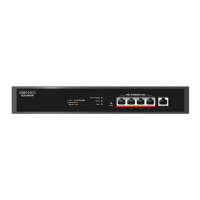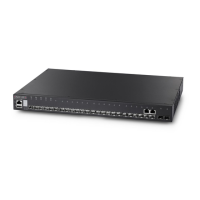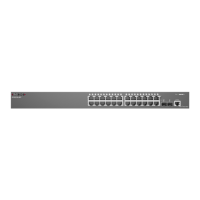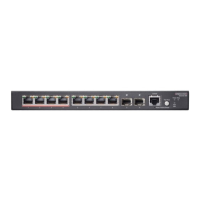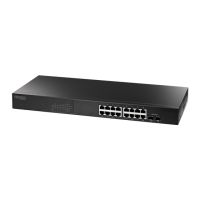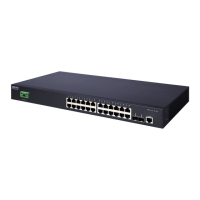C
HAPTER
13
| Security Measures
Configuring Port Security
– 341 –
◆ If port security is enabled, and the maximum number of allowed
addresses are set to a non-zero value, any device not in the address
table that attempts to use the port will be prevented from accessing the
switch.
◆ When the port security state is changed from enabled to disabled, all
dynamically learned entries are cleared from the address table.
◆ If a port is disabled (shut down) due to a security violation, it must be
manually re-enabled from the Interface > Port > General page
(page 127).
◆ A secure port has the following restrictions:
■
It cannot be used as a member of a static or dynamic trunk.
■
It should not be connected to a network interconnection device.
PARAMETERS
These parameters are displayed:
◆ Interface – Port or trunk identifier.
◆ Action – Indicates the action to be taken when a port security violation
is detected:
■
None: No action should be taken. (This is the default.)
■
Trap: Send an SNMP trap message.
■
Shutdown: Disable the port.
■
Trap and Shutdown: Send an SNMP trap message and disable the
port.
◆ Security Status – Enables or disables port security on the port.
(Default: Disabled)
◆ Max MAC Count – The maximum number of MAC addresses that can
be learned on a port. (Range: 0 - 1024, where 0 means disabled)
The maximum address count is effective when port security is enabled
or disabled, but can only be set when Security Status is disabled.
WEB INTERFACE
To set the maximum number of addresses which can be learned on a port:
1. Click Security, Port Security.
2. If port security is enabled on the selected port, first clear the check box
in Security Status column to disable security.
3. Set the maximum number of MAC addresses allowed on the port.
4. Click Apply.
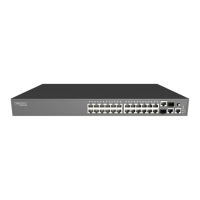
